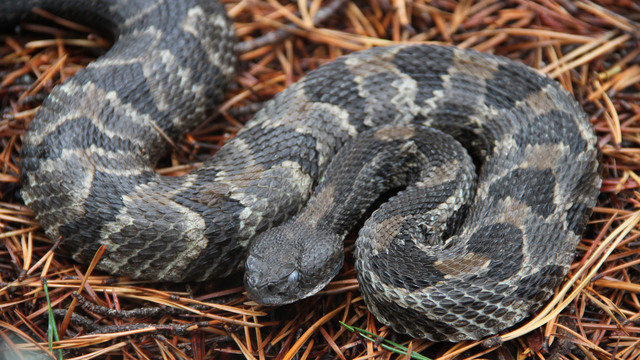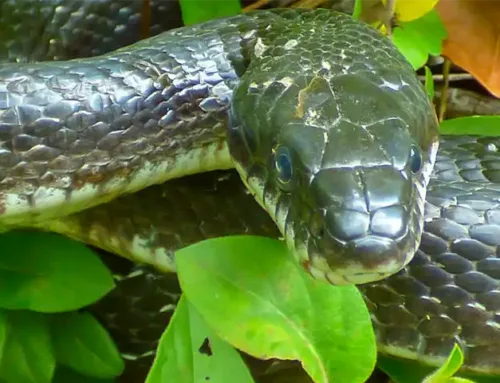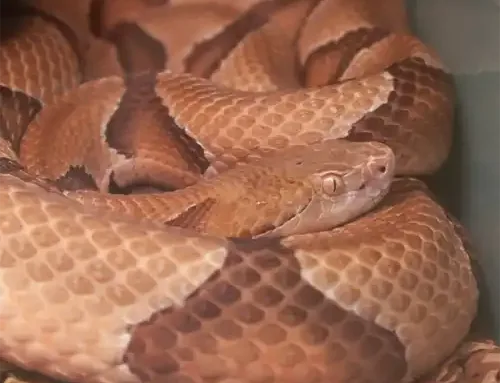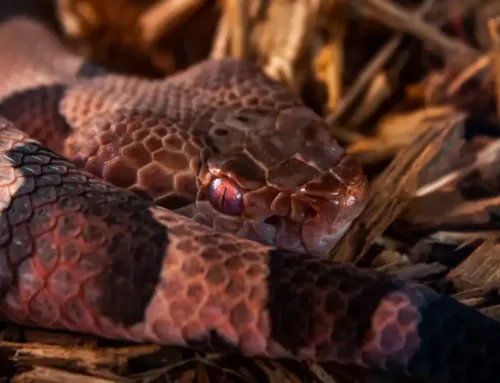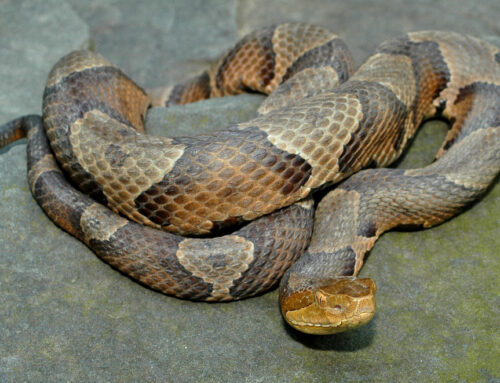About Timber Rattlesnakes in Virginia
Rattlesnakes in Virginia are called the Timber Rattlesnake, and they are a protected, endangered species in the state of Virginia. Timber rattlesnakes are common only in the mountainous regions of western Virginia and a small area of extreme southeastern Virginia where they are known as canebrake rattlesnakes.
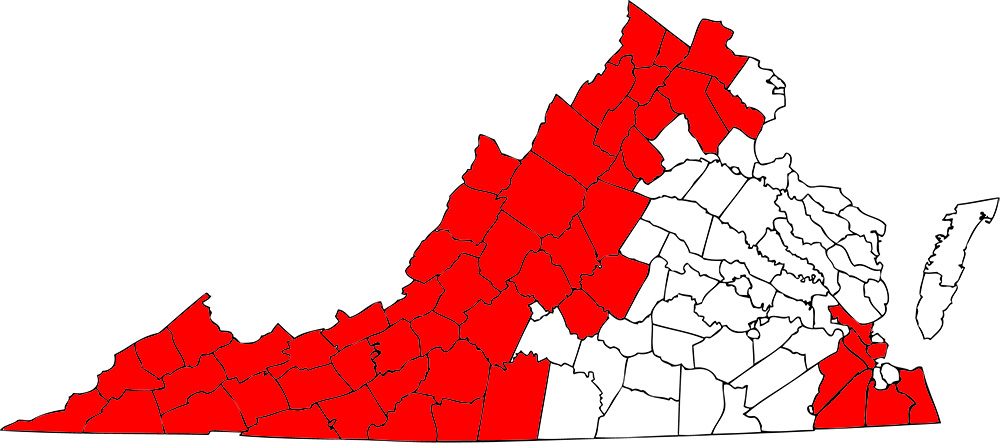
Virginia Rattlesnake Map
In Virginia, it is illegal to kill a snake unless it poses a threat to a person or livestock, according to Virginia Wildlife Management and Control. Illegally killing a snake is punishable by a fine of up to $1,000 and six months in jail.
About Virginia Timber Rattlesnakes
Timber rattlesnakes, (Crotalus horridus) which are called canebrake rattlesnakes in the Coastal Plain of the Southeast, are large, heavy-bodied snakes with the characteristic rattles on the end of the tail. Canebrakes are usually gray and may even have a pink hue and a pinkish, yellow, orange, or brown stripe running the length of the back. Timber rattlers are typically more brown or yellowish and may even be black. Both species have solid black tails and black chevrons on the back and sides with the point of the (V) pointing forward.
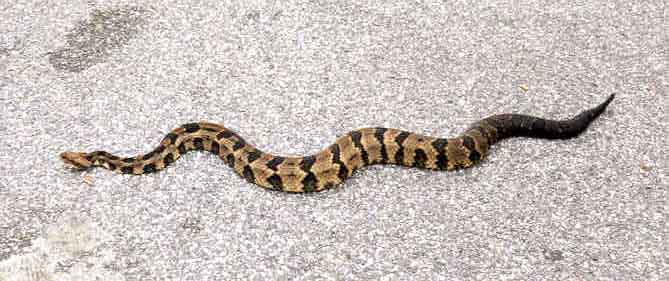
How Dangerous are Timber Rattlesnakes?
Like other vipers, the timber rattlesnake is venomous with venom potent enough to kill a human. A timber rattlesnake bite is a medical emergency, however, with proper precautions and respect for wildlife, a timber rattlesnake bite is rare. If you spot a timber rattlesnake on your property, take steps to get rid of them right away. These snakes are dangerous and should only be removed by trained wildlife control professionals.
Rattlesnake Identification
Rattlesnake adults usually grow to a total length of 36–60 inches. Most adult timber rattlesnakes found measure less than 39 to 45 in. in total length and weigh on average between 1.1 and 3.3 lbs. There are several types of rattlesnakes you should be aware of.
Types of Rattlesnakes in North America
Prairie Rattlesnake
Western Diamondback Rattlesnake
Mojave Rattlesnake
Northern Pacific Rattlesnake
Eastern Diamondback Rattlesnake
Eastern Massasauga Rattlesnake
Timber Rattlesnake (found in Virginia)
Black-Tailed Rattlesnake
Arizona Ridge-Nosed Rattlesnake
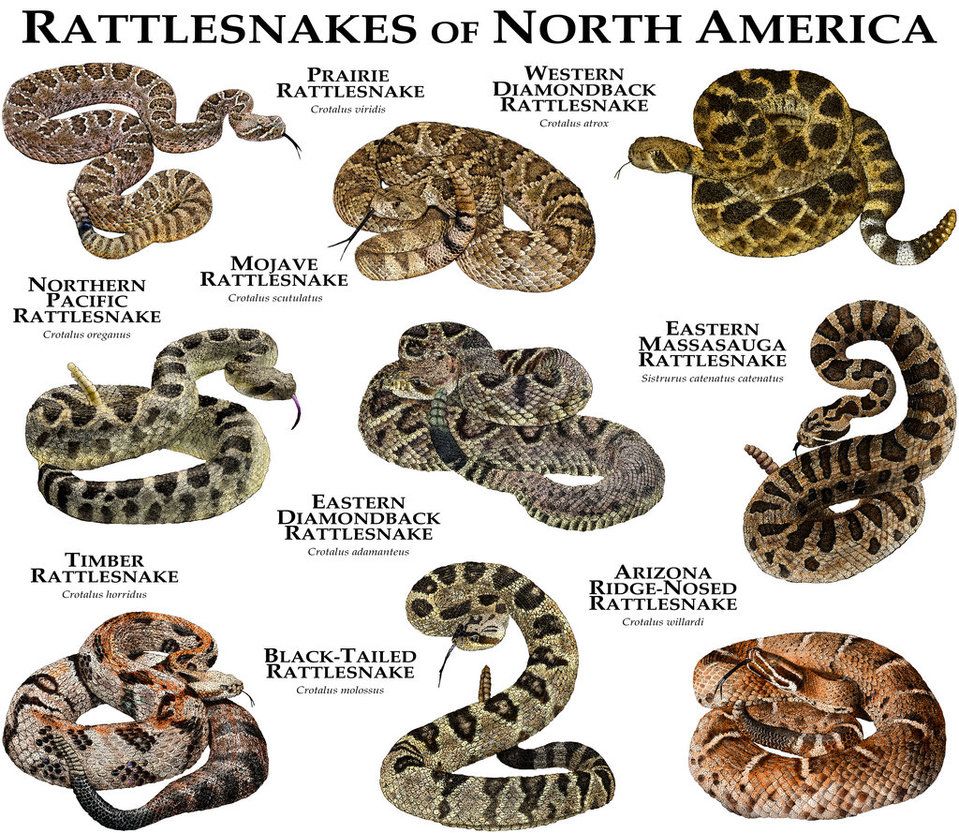
The timber rattlesnake, which is commonly found in West Virginia and in Virginia is best identified by its triangular-shaped head, which is wider than its body. Their triangular or diamond-shaped heads are characteristic of most venomous, pit viper snakes. An adult rattlesnake will usually have a large rattle at the end of its tail, but a young rattlesnake may only have a single button.
Rattlesnakes are often mistaken for bullsnakes, which have narrow heads streamlined to their body. Bullsnakes have eyes on the side of their head with circular pupils. Rattlers have eyes that are more forward-facing and have slit-like pupils.
How to Keep Rattlesnakes Away
What to do if you find a rattlesnake in your yard? The best defense is to let it be and walk away. Do not attempt to trap, poke, remove, or scare the snake away. Give it room to retreat. If you feel uncomfortable with the rattlesnake nearby, it’s best to call a professional snake removal service that can trap and remove the snake safely and humanely
Keep in mind, the presence of a rattlesnake snake in your yard is a symptom of a bigger issue; your house or yard is attractive to snakes. To keep rattlesnakes away, keep your yard free of debris, high brush, logs, and leaf piles. By keeping your plants and grass well maintained, you’ll lower the chances of welcoming rodents, pests, and snakes into your yard.
